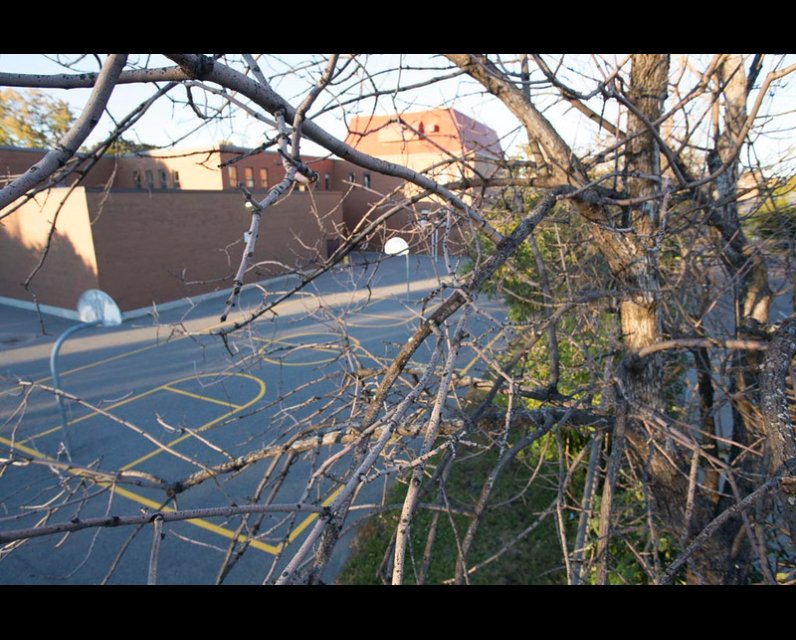Unpublished Opinions
Angela Keller-Herzog is a periodic contributor to Unpublished Ottawa on economic, social and environmental issues of local interest. She is currently the candidate for the Green Party for Ottawa Centre in the 2019 federal election. Angela is an economist, community organizer, and runs an eco-friendly bed & breakfast in the Glebe.
Inner-city Ottawa school needs help to green its school yard

Dear editor, hello readers!
This letter has an 'action item', then there is a story, and then at the end there is some musing about policy issues that are askew. I hope some of you will stay with me 'till the end.
Action item:
Please VOTE for Glashan School in Centretown Ottawa to win a $20,000 outdoor classroom! Glashan is the only Ottawa school to be a finalist in the Majesta Trees of Knowledge Competition. From April 7 to May 5, you can vote for Glashan every day.
Sign up here to get your daily voting reminder and voting link: http://glashangreening.ca/join-us/
The story:
“Our school looks like a jail!” says a student.
The schoolyard is bleak, mostly pavement. To make things worse, the majority of trees shading the yard are ash trees and have to be removed because they are infested by the emerald ash borer.
This is Glashan Public School, an Ottawa Carleton District School Board middle school with a present population of almost 400 Grade 7 and 8 students. Glashan students come from the Glebe, Centretown, Lowertown, Sandy Hill and Old Ottawa South. It is located in the heart of Ottawa, at the busy intersection of Catherine and Kent Streets.
The bleak inner-city schoolyard is in marked contrast to the vibrancy of the school and its positive spirit. Glashan prides itself on an ethos of inclusivity, and brings together students from a large catchment area with diverse ethnic and language backgrounds.
And now the School Council's Green Team has set itself the goal to make change. We want to see renewal and greening of the yard. Principal Jim Tayler, lent fuel to early discussions in the spring of 2013, “we should develop an overall vision and a plan, not just a fix here and a tree there”.
The public school board’s centralized grounds department however, hardly has enough resources to remove the hundreds of dying ash trees on its 140 schoolyards – which will soon become a safety hazard. There is a budget for felling trees...but no budget for replanting or greening. This is left up to parents, communities and the city.
This lack of resources for schoolyard greening is not for want of scientific evidence of the community benefits of urban greening and student benefits of schoolyard greening.
The community network of Ecology Ottawa is supporting the project by lending expertise in naturalization and schoolyard greening. Ecology Ottawa community volunteers will help to water the trees and shrubs throughout the first few summers until plants are well-established. An initial outreach to local businesses generated a seed fund to help with the first phase of planning – with positive response from the neighbourhood from dentists, to jewellers, to pizza joints.
A class-by-class facilitated consultation took place at the school in late fall. This was led by schoolyard greening guru Ann Coffey. Many problems with the yard were identified and many ideas, solutions and proposals for better use of the yard were received.
Students are pleased that they were asked. Takeo, a grade 8 student commented, “I hope that with this project the yard is going to get more enjoyable for future generations of students here. I would like to experiment with growing grapes on the fence. I think it is possible in this climate.”
A teacher survey and community consultation meeting followed. The project now has an impressive proposed site concept plan. It includes not only new shade trees and green space, but also a play & climbing structure and large scale digital murals that the kids will co-create with a local artist. The quality of planning work has not gone unnoticed -- the project has been selected a top-ten finalist in a cross-Canada outdoor classroom competition. Winner is the project with the most community support (see the call to vote above).
The Green Team has put up their shingles – a Facebook site at https://www.facebook.com/glashangreeningproject -- and a brand-new web-page at www.glashangreening.ca. Poised to launch a direct-ask fundraising campaign as the tulips come out in Ottawa -- they need to raise $250,000 to realize their vision. Grant proposals have gone out -- and hopefully between foundations and corporate community contributions the project will realize its green ambition. Nothing is certain but hopes are running high.
One surprising ask found on the web-site is for in-kind contributions by engineering firms in the area of noise abatement and mitigation. Site assessment of the schoolyard found significant levels of noise both from the Queensway and schoolside arterial roads. Users have gotten used to these conditions -- but the schoolyard greeners would like to see improvements in this dimension as well. They point out that a healthy learning and recreational environment is not compatible with high levels of noise pollution.
Policy Issues:
The fact that the Ottawa-Carleton District School Board does not have sufficient resources for all kinds of school and learning essentials (books, instruments, computers, playgrounds) is pretty well known by parents getting regular requests for top-ups out of private pockets.
With the hard impact of the emerald ash borer now felt across the city, the school board has been forced to find resources to remove hundreds of dying ash trees from school grounds -- as the trees die, the wood rapidly becomes brittle and a safety hazard. However, no resources exist for replanting. Green rumours have it that grounds staff are asking for new resources towards replanting in the 2014-15 budget. Whether this request survives in the battle against other priorities is an issue to be watched.
But what is not really discussed is that we find ourselves in some kind of structural cul-de sac where there is no good way forward. The fact that the Glashan School Council is looking to raise $250,000 seems out-of-scale with reality. Why should it cost so much to expand a few green spaces in the yard, put in a few trees, raised boxes and a climbing structure? Why should parents have to put in such an enormous effort to raise this extraordinary amount of money? The answer is that we have been railroaded into so much concern with liability and risk, that the public school board wants to see all physical work done by pre-qualified, fully insured contractors. Nary a child shall be in sight when the asphalt is removed, when the trees are planted (or rather "installed"), lest some accident might happen. No longer can communities, school councils, environmental organizations, teachers and kids roll up their sleeves and improve their environment.
The problem with this situation is two-fold. First of all, going with commercial contracting makes costs sky rocket -- for example, a simple log-bench will cost $1,250, despite the city offering up free logs!
The second problem is that community stewardship over green spaces, pride of place, local improvements are all interconnected....but not connected to the contractors. For the new trees to survive and thrive, the help of the community is needed (summer watering for example). For the kids not to tear off branches, not park their bikes against trees, not to trample shrubs, they need to be taught about nurturing and caring for plants and greenery. How can we expect this when they are disconnected from the planting and schoolyard renewal work by policy design and board practice? How can we expect school custodial staff to care, when grounds maintenance work is outsourced to contractors that roll around once a month? These approaches might work for grey infrastructure, but they are not working for green infrastructure.



Comments
Be the first to comment